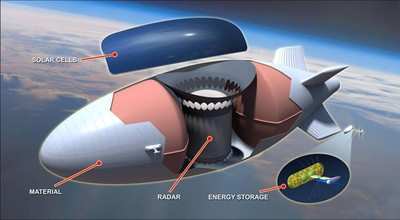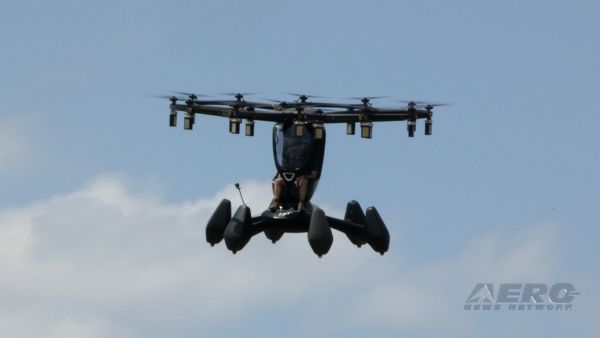But This Is Not Your Grandpa's Zeppelin
A giant, unmanned airship capable of hovering at about 70,000
feet promises to give future warfighters an unprecedented eye on
the battlefield.

The Defense Advanced Research Projects Agency's Integrated
Sensor is Structure program, ISIS for short, will provide a
detailed, real-time picture of all movement on or above the
battlefield, explained program manager Timothy Clark.
As envisioned, the ISIS airship will be able to follow troop
movements - friendly as well as enemy - up to 180 miles away, and
track the most advanced cruise missiles from about 370 miles
away.
It also will be able to watch ground targets through heavily
forested areas, a capability not possible without the huge
ultra-high-frequency antenna ISIS will provide.
Operating outside of controlled air space and out of the range
of most surface-to-air missiles, Clark said, the system will bring
a capability not possible with satellites: the ability to maintain
watch over a huge, fixed position without blinking.
The American Forces Press Service reports ISIS is expected to
have a 10-year lifespan, although engineers estimate it could last
even longer. When it's no longer needed in one location, it can be
moved to watch another. "We should be able to get it to anywhere
the services would need it in about 10 days," Clark said.
Since the program's inception in 2004, its focus has been on
developing technologies needed to create extremely large,
super-sensitive, but also super-lightweight phased-array radar
antennas. That's been accomplished, Clark said, with 6,000 square
meters of X-band and UHF antenna condensed onto a 40-by-46-meter
cylinder - about the size of a 15-story apartment building.
Meanwhile, the antenna's weight has been cut 90 percent, from 20
kilograms per meter to about 2.

Powering the system so it can stay aloft was another challenge.
Batteries were too heavy, so engineers tried something else. They
opted to use solar rays during the daylight hours and to
electrolyze water, storing the hydrogen and oxygen separately so
they could be run through a hydrogen fuel cell at night. "Then we
collect the water and run it again," Clark said. "It's a fully
regenerative system."
The next step is to incorporate these technologies into the hull
of a non-rigid, pressurized airship. A demonstration program
already is under way to see how this will work, Clark said.
Large pieces of the system are being put together at various
locations around the country, and if all goes as planned, they'll
be put together in a Lockheed-Martin hangar in Akron, Ohio. Flight
tests are expected to begin in late fall 2012, likely in the
Florida Keys. Initially, DARPA will conduct 90 days of tests
worldwide against air, ground and surface targets at known
positions and sizes to ensure the radar is operating properly.
From there, the Air Force will take over the program, conducting
its own additional testing before taking the ISIS operational.
 ANN's Daily Aero-Term (04.20.24): Light Gun
ANN's Daily Aero-Term (04.20.24): Light Gun Aero-News: Quote of the Day (04.20.24)
Aero-News: Quote of the Day (04.20.24) ANN's Daily Aero-Linx (04.21.24)
ANN's Daily Aero-Linx (04.21.24) Aero-News: Quote of the Day (04.21.24)
Aero-News: Quote of the Day (04.21.24) ANN's Daily Aero-Term (04.21.24): Aircraft Conflict
ANN's Daily Aero-Term (04.21.24): Aircraft Conflict




